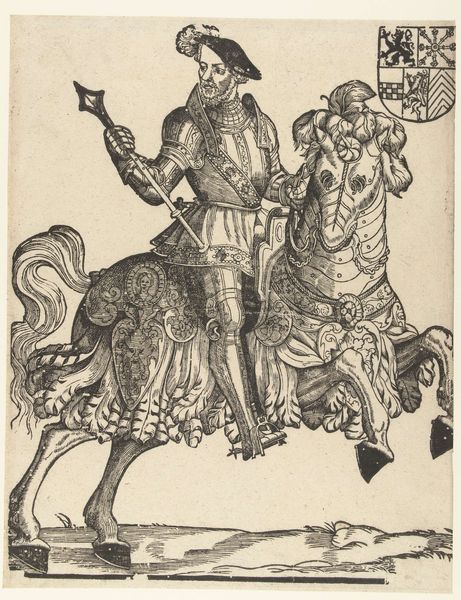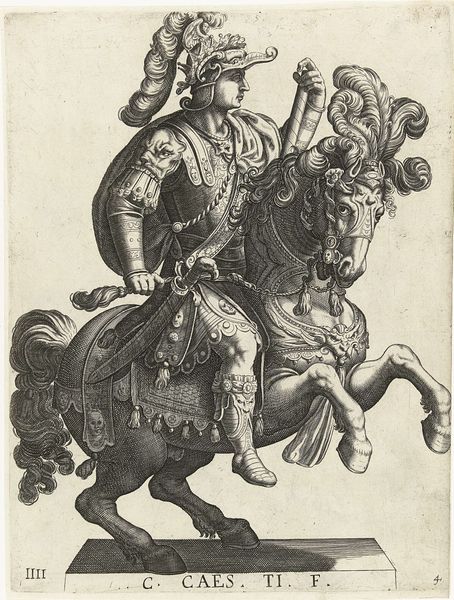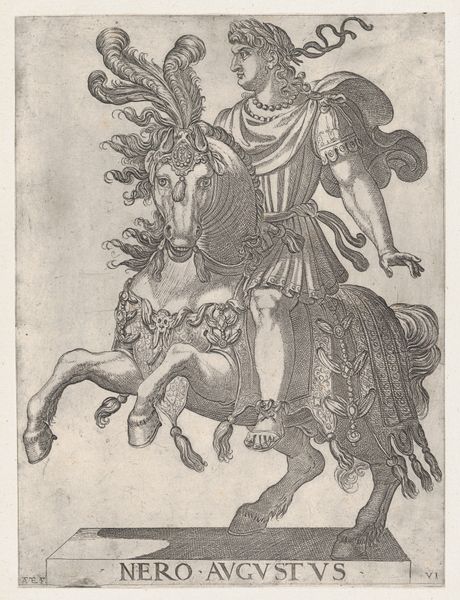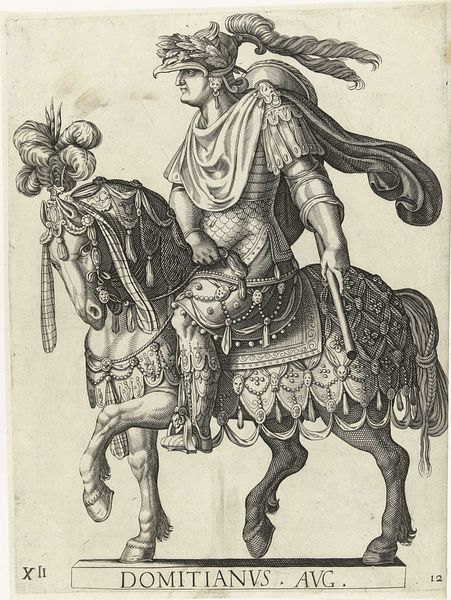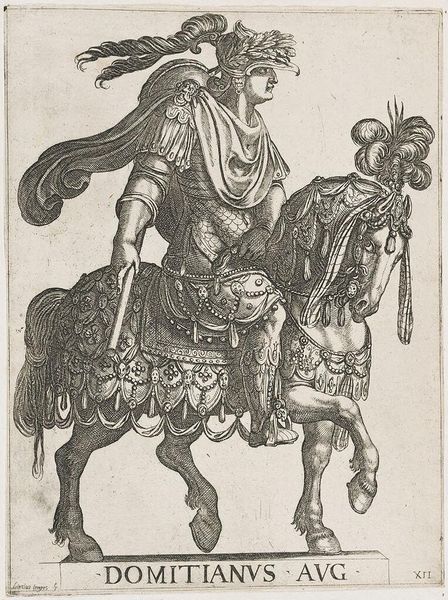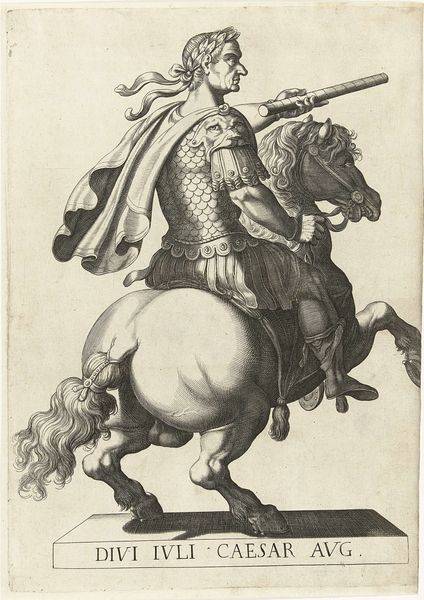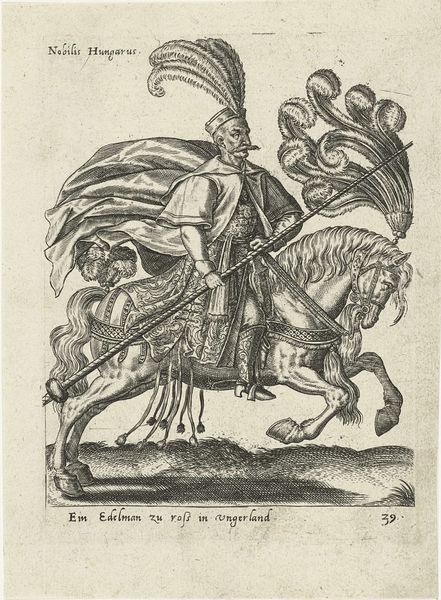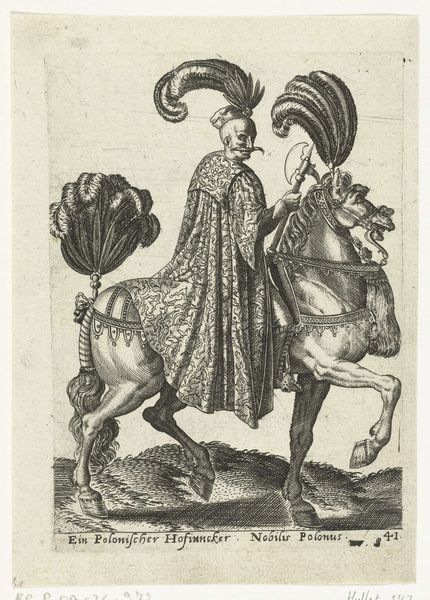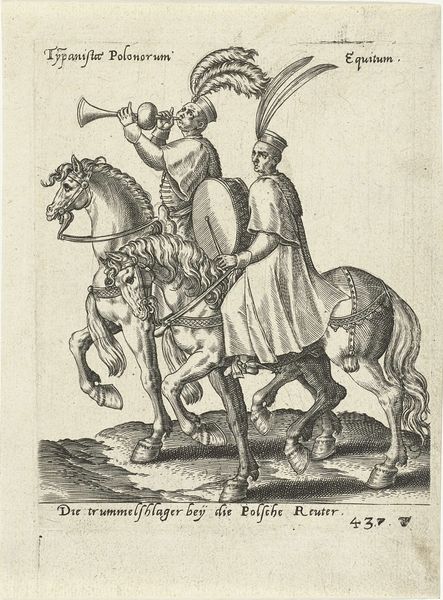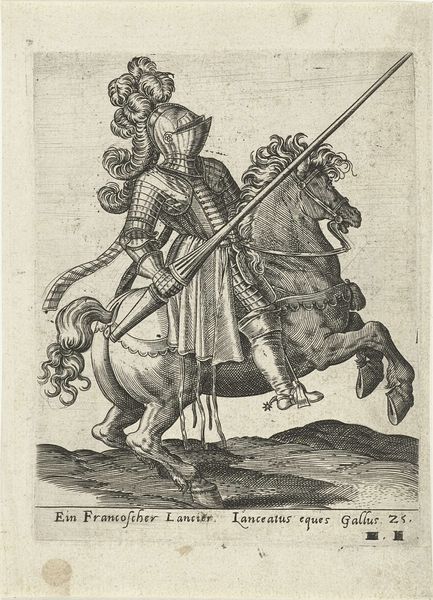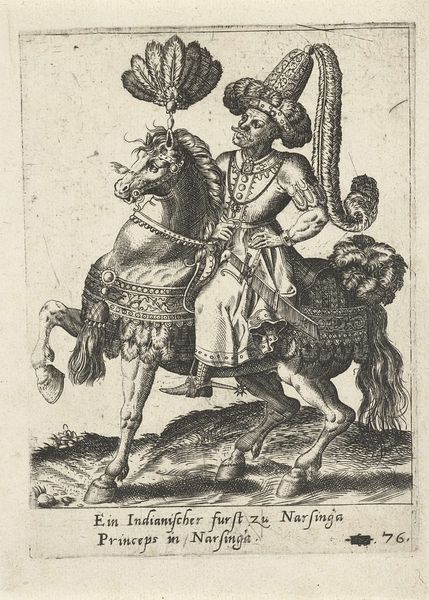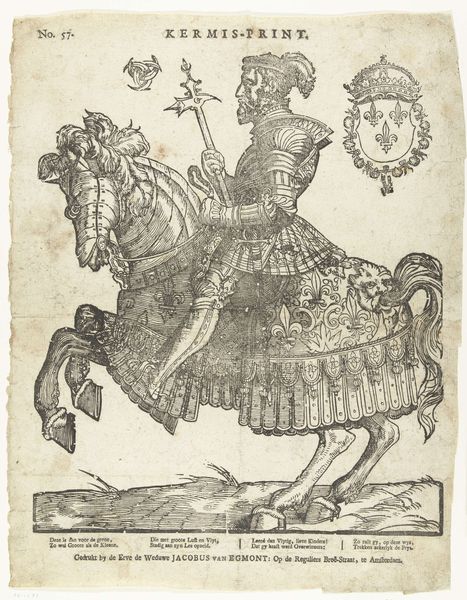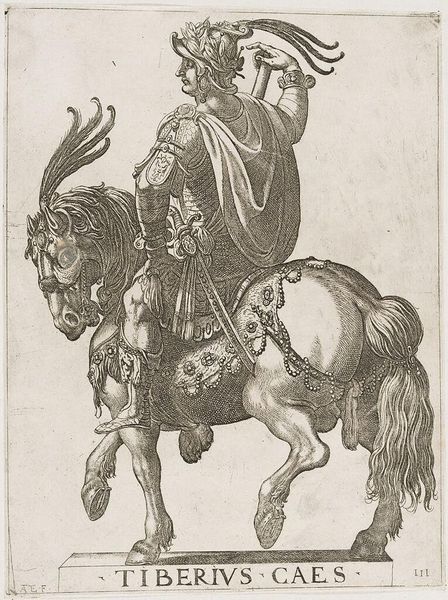
engraving
#
portrait
#
baroque
#
figuration
#
form
#
classicism
#
history-painting
#
italian-renaissance
#
engraving
Dimensions: height 287 mm, width 222 mm
Copyright: Rijks Museum: Open Domain
Curator: Here we have Laurens Eillarts' "Equestrian Portrait of Emperor Nero," an engraving dating from about 1616 to 1620. It strikes me with the potency of a coin—as a readily reproduced emblem. Editor: The intensity of detail is mesmerizing; the harness glitters, and Nero is very...present. How were such granular textures achieved in an engraving of this scale, I wonder? Curator: Well, the symbolism certainly overwhelms—the laurel wreath signifies victory and authority, Nero astride the horse embodies power, and even his gaze conveys the expectation of deference. It recalls the visual language of Roman imperial propaganda, despite being created so long after Nero's death. Editor: Yes, the textures and their articulation signify a laborious print-making practice; one can imagine the artisan tracing and hatching, the repetitive yet skilled process of transferring the composition to plate. The details elevate this piece beyond a mere depiction, as there's an obsessive element. Curator: Agreed, look at how every tassel, every feather, is painstakingly delineated. Nero as presented by Eillarts offers the embodiment of what Romans revered as authority, recalling how Emperors after Nero worked to erase the history of Nero by repurposing objects that carried his imagery and messaging to legitimize and claim their rein. Editor: Indeed, a material echo! To what extent did this type of commission facilitate Eillarts' career? Was it a prestigious or rather a routine project, just part of his usual output in Antwerp? I find these historical connections extremely appealing. The political project on one hand, and the handcraft involved in this kind of piece—in its moment and afterlife. Curator: It speaks volumes about how artists grappled with historical narratives and, maybe even, how patrons used these images to broadcast power. Editor: A potent blend of symbol and substance then. An excellent conversation-starter on Roman history and art!
Comments
No comments
Be the first to comment and join the conversation on the ultimate creative platform.
